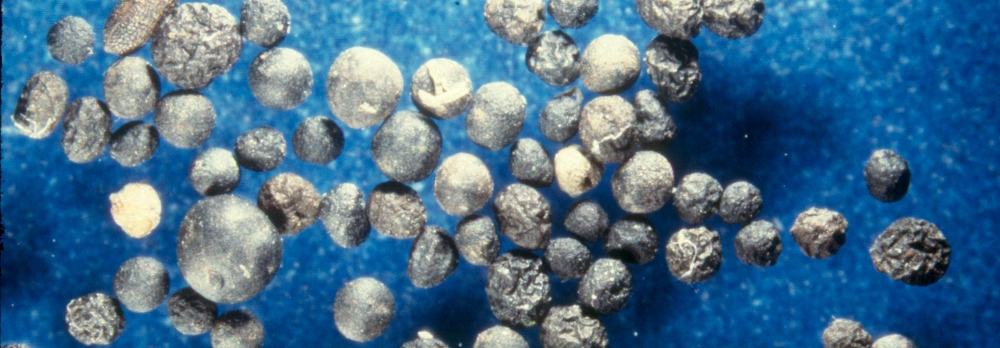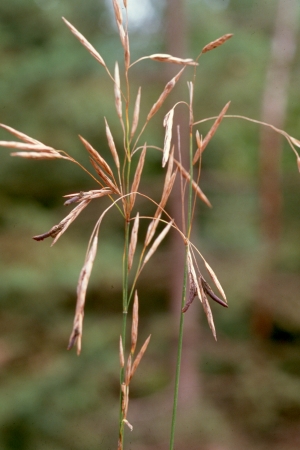Home >> What fungi are >> Reproduction >> Asexual Reproduction >> Sclerotia
FUNGI REPRODUCING ASEXUALLY BY MEANS OF SCLEROTIA AND OTHER NON-SPORIC STRUCTURES

The panoramic shot above includes several species of fungi. In fact, except for the object at top, second from the left, which is a seed, everything in this picture is a fungus. The structures represented here are sclerotia, asexual reproductive structures that are neither sporangiospores nor conidia. Sclerotia are multicellular structures having a more or less regular morphology and serving as reproductive bodies. They are often hard, solid, and able to survive relatively long periods of time in a dormant state. It is a little difficult to provide a definition of sclerotia that consistently distinguishes them from spores. However, their large size, origin from more than a single cell and differentiation into more than one tissue type usually makes their identification as sclerotial easy.

Sclerotia often arise from a mass of hyphae that become densly packed. These hyphal masses do not just become more compact but actually differentiate into a solid tissue surrounded by some sort of rind. The structure of sclerotia differ considerably from one species to another. In some the colour is constant throughout while in others the rind may be one colour, usually dark, and the interior another. The photo at top left shows the cross section of a sclerotium of the common plant parasite Sclerotium hydrophilum. The rind is fairly thin, possibly one cell thick, and the interior is not highly compact, being composed of cells that are not greatly different from hyphae. The thin rind and relatively compressable centre make these sclerotia capable of some expansion and contraction during wetting and drying. In the photo at the top of the page, the wrinkled sclerotia are those of S. hydrophilum.
The photo at lower left represent a cross section of a sclerotium of Cenococcum geophilum. Here the rind is quite thick and complex. The upper part of the rind is composed of very small cells, punctuated now and again by more elongated cells. Below the top layer are elongated cells arranged in a diagonal fashion, separated by open areas. The open areas are not due to damaged caused when the sclerotium was cut but rather serve as a separating layer between the compact surface and hard interior. The interior itself is composed of a very compact, hard tissue. The centermost part of these sclerotia is often hollow, giving rise to the generic name Cenococcum, "ceno" meaning hollow and "coccum" meaning sphere. In the panoramic view, C. geophilum is seen as large, smooth, shiny structures.

Sclerotium hydrophilum and Cenococcum geophilum are both able to survive long cold winters and germinate in the spring to form new generations. Germination occurs by the production of hyphae from the cells of the sclerotium.


Some sclerotia do not germinate by the production of hyphae and instead give rise to other complex structures. For example, sclerotia of the ergot fungus, Claviceps purpurea, germinate in the spring to produce a small pin-like stroma that in turn give rise to ascospores. In the picture at right several dark elongated sclerotia can be seen protruding from the florets of the large grass. Ergot is a disease of grasses that can be found throughout New Brunswick. At the far right a single pinkish tack-like stroma can be seen; this stroma had emerged in the spring from a buried ergot sclerotium.

Stromata are not the only things that can arise from a germinating sclerotium. At left is a photo of Collybia cookei, a common fungus in our region. A large spherical sclerotium can be seen at the base of one of the mushrooms. This sclerotium, about the size of an unpopped seed of popcorn, was produced by the fungus the previous season and germinated to produce a mushroom following rain the next summer. Members of the discomycete order Sclerotiniales are largely defined by their ability to produce apothecia from sclerotia